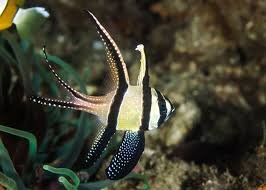The dragon (龙, Lóng) has long been one of the most powerful symbols in Chinese culture, mythology, and imperial traditions. Unlike the fearsome creatures of Western folklore, Chinese dragons are benevolent, wise, and celestial beings that symbolize prosperity, good fortune, and the divine right to rule.
For centuries, Chinese emperors and royal families have regarded dragons as sacred protectors and heavenly emissaries. These mythical creatures were believed to connect the imperial lineage to the heavens, ensuring the ruler’s authority and the kingdom’s prosperity. Dragons also played a key role in imperial ceremonies, feng shui beliefs, and ancestral worship, reinforcing their association with cosmic harmony and dynastic success.
This article explores the deep relationship between dragons, prosperity, and the Chinese royal family’s connection to heaven and earth, examining their role in imperial myths, religious beliefs, dynastic legitimacy, and cultural traditions.
1. The Dragon as a Symbol of the Emperor’s Divine Mandate
The Concept of the Mandate of Heaven (天命, Tiānmìng)
One of the most important political and spiritual concepts in Chinese history is the Mandate of Heaven (天命, Tiānmìng). According to this belief, the right to rule was granted by heaven, and only those who governed wisely and justly would maintain their legitimacy. The dragon was seen as the celestial emblem of this divine favor.
- The Yellow Dragon (黄龙, Huáng Lóng) was believed to appear only when a wise and virtuous ruler ascended the throne, symbolizing heaven’s approval.
- Many emperors claimed to be descendants of the dragon, reinforcing their divine right to rule.
- If a ruler lost the Mandate of Heaven due to corruption or misrule, natural disasters, rebellions, and celestial omens (such as a dragon disappearing from palace decorations) were seen as warnings.
The Dragon Throne and Imperial Authority
The imperial throne itself was often referred to as the Dragon Throne (龙椅, Lóng Yǐ), symbolizing the ruler’s absolute power.
- The forbidden use of the dragon symbol outside the royal family reinforced its connection to imperial exclusivity and divine status.
- The emperor’s robes, known as Dragon Robes (龙袍, Lóngpáo), were embroidered with five-clawed dragons, a privilege reserved solely for the Son of Heaven.
- Even the imperial palaces and temples were adorned with dragon motifs, reinforcing the belief that the emperor’s presence maintained cosmic balance.
2. Dragons and the Royal Family’s Connection to Heaven and Earth
The Celestial Dragon as a Divine Messenger
Chinese myths describe dragons as beings that exist between the heavens and the earth, acting as intermediaries between the gods and humanity. The emperor, as the Son of Heaven (天子, Tiānzǐ), was believed to have a unique spiritual connection with these celestial creatures.
- Legends tell of emperors receiving guidance from dragons in their dreams, foretelling the fate of their dynasty.
- The Dragon King (龙王, Lóng Wáng), ruler of the seas and weather, was said to bless righteous emperors with abundant rains, ensuring bountiful harvests and national prosperity.
- Some royal families performed dragon ceremonies to seek divine favor, particularly during times of war, drought, or economic hardship.
The Emperor’s Role as the Earthly Dragon
Just as dragons were seen as celestial beings, the emperor himself was regarded as the earthly manifestation of the dragon.
- In some myths, the first emperor of China, Qin Shi Huang (秦始皇), was said to have been fathered by a dragon, solidifying his supernatural lineage.
- The Zhao Dragon legend states that Emperor Zhao Kuangyin (赵匡胤), the founder of the Song Dynasty, was protected by a dragon at birth, signifying his destined rule.
- Rituals conducted in the Temple of Heaven (天坛, Tiāntán) included prayers to dragons for the empire’s prosperity and harmony.
3. Dragons and the Prosperity of the Imperial Dynasty
Dragon Feng Shui and Royal Wealth
The royal court often relied on Feng Shui (风水), the ancient Chinese practice of geomancy, to ensure the empire’s prosperity and stability. Dragons played a crucial role in these beliefs:
- The Dragon Vein (龙脉, Lóngmài) was a mystical energy line believed to run through mountains and rivers. Imperial palaces were strategically built along these veins to ensure dynastic strength and economic success.
- Dragon symbols in palace architecture were used to attract positive energy (Qi, 气) and deflect misfortune.
- Some emperors consulted Feng Shui masters to determine the ideal burial sites (龙穴, Lóngxuè) for their ancestors, ensuring the family’s continued wealth and power.
The Role of the Dragon in Imperial Festivals and Economy
Throughout history, the Chinese royal family used dragon-related festivals and traditions to reinforce their connection to prosperity.
- The Dragon Boat Festival (端午节, Duānwǔ Jié), although linked to the poet Qu Yuan, was also celebrated by emperors as a way to honor the dragon’s protective powers.
- The Chinese New Year’s Dragon Dance was performed in the imperial court to invite abundance and drive away evil spirits.
- Imperial coins, known as Dragon Coins (龙币, Lóng Bì), often bore dragon engravings to symbolize economic strength.
4. Legendary Dragons of Imperial Dynasties
The Yellow Emperor and the Dragon of Civilization
One of the most famous dragon-related legends in Chinese history is that of the Yellow Emperor (黄帝, Huáng Dì), who is credited with founding Chinese civilization.
- According to myths, he was guided by a dragon to create the foundations of writing, medicine, and governance.
- At the end of his reign, he was said to have ascended into the heavens on the back of a dragon, reinforcing his divine status.
The Ming Dynasty and the Forbidden City’s Nine Dragons
During the Ming Dynasty (1368–1644), the construction of the Forbidden City in Beijing was heavily influenced by dragon symbolism.
- The Nine-Dragon Wall (九龙壁, Jiǔlóng Bì), a famous imperial structure, was built to symbolize the emperor’s supreme power.
- The number nine (associated with dragons) was repeatedly used in court rituals, architectural designs, and royal ceremonies.
- The belief was that as long as the emperor respected the dragon’s spiritual authority, his dynasty would thrive.
5. The Legacy of the Imperial Dragon in Modern China
Even though China’s dynastic rule ended in 1912, the dragon’s influence on prosperity and royal heritage remains deeply embedded in modern Chinese culture.
- The Chinese government continues to use the dragon as a national symbol, representing strength and unity.
- Many wealthy Chinese families still consult Feng Shui masters to align their homes and businesses with dragon-related prosperity principles.
- The phrase “Descendants of the Dragon (龙的传人, Lóng de Chuánrén)” is a popular expression used to describe the Chinese people’s shared cultural heritage.
Conclusion
Throughout history, the dragon has been a symbol of prosperity, divine authority, and the sacred connection between the Chinese royal family and the cosmos. From the Mandate of Heaven to Feng Shui, imperial legends, and dynastic rituals, dragons have played an essential role in shaping China’s imperial legacy and its vision of fortune and power.
Even in modern times, the dragon remains a revered cultural symbol, representing China’s enduring strength, prosperity, and spiritual heritage.







